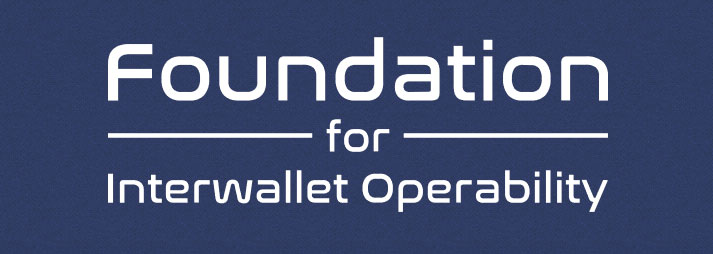FIO, short for “Foundation for Interwallet Operability”, is an interoperability effort spearheaded by Dapix, Inc an experienced team of technologists based out of Denver, CO. The Foundation has created the FIO protocol, an open source solution to some of the usability problems of blockchain based assets like Bitcoin. The protocol is being formed by leading exchanges and wallets, like Edge, to create an industry standard that enhances the usability of blockchain based assets.
Sending and receiving cryptocurrencies can be quite complex and intimidating to users of all stripes. Many have felt the anxiety of sending non-refundable peer to peer cash but the FIO protocol is attempting to make these actions easier, rich with data, and more versatile.
Currently there are four challenges that make crypto use and adoption difficult:
- Addresses are long alpha-numeric strings, which are quite intimidating for new users
- Each blockchain has a unique address format
- There is no concept of a payment request between wallets
- Metadata is not supported by blockchains which makes e-commerce more difficult
The FIO protocol addresses all of these challenges head on and we’re excited to be a part of the foundation.
FIO Addresses & Domains
The protocol will have an address & domain system which will look quite similar to email. Instead of having long alpha-numeric strings as addresses a user like myself could have an address that looks like the following: “brett.edge”. Brett in this case would be my FIO address which is part of Edge’s FIO domain. This should remind users of their own email which starts with a unique address delimited by an @ and ends with the domain of the email provider like gmail: brett@gmail.com.
Each FIO Address can map to an unlimited number of chain/address pairs, provided that it maps to just one public address on any one blockchain. For example, brett.edge can map to:
- 1A1zP1eP5QGefi2DMPTfTL5SLmv7DivfNa on Bitcoin blockchain.
- 0xAb5801a7D398351b8bE11C439e05C5B3259aeC9B on Ethereum blockchain.
- Public address on any other blockchain.
Multiple FIO Addresses can map to the same chain/address pair, allowing a single user to own multiple FIO Addresses inside a single wallet.
Owners of a FIO domain can choose to make their domain public. This will allow anyone, not just the owner of the FIO Domain, to create a FIO Address on that domain directly, provided they pay the registration fee. For example, this would give Edge the ability to make it easy for our users to set up FIO Addresses with our branded FIO Domain.
Example: newuser.edge
FIO Meta-Data
The FIO blockchain stores metadata about Other Blockchain Transactions (OBT)—transactions that were or will be executed on another blockchain. For example, if Brett is sending 1 BTC to Paul using a wallet that has integrated FIO, a transaction on the FIO blockchain will be created to reflect that event. The following information will be stored:
- Sender
- Receiver
- Blockchain name
- Currency name
- Amount of currency
- Fees paid
- Status of OBT
For those worried about privacy, all metadata is encrypted using the sender’s private key and the receiver’s public key, so that only the parties to the transaction can see it. In addition, a user may turn off recording of any OBT information altogether.
FIO Work-Flow
While common in fiat electronic payment systems, a request transaction is non-existent in the crypto-ecosystem. The FIO protocol makes this possible. It starts with the receiver, who specifies the sender(i.e. brett.edge), blockchain, currency, amount and metadata and then submits this OBT(Other Blockchain Transaction) to the FIO blockchain. The sender’s wallet monitors the FIO blockchain. Once it detects the request transaction, it triggers a notification inside the sender’s wallet. The request pre-populates the sender’s wallet with the provided information, hence eliminating any risk of typing mistakes.
This request transaction workflow can also be used to make multi-signature transactions much easier, can enable recurring payments, and can be used as an authentication tool. Being able to send a request opens up a lot of possibilities that are not possible with the current crypto-currency user experience.
FIO Blockchain
The FIO protocol will function as a blockchain. After a long in-depth analysis of many different platforms, the foundation decided the FIO blockchain will be a fork of the EOS blockchain based on metrics such as speed, maturity, and ease of development. Like EOS, the FIO blockchain will have a token and use delegated proof of stake for consensus. However, many modifications have been made and will be made to the fork to achieve the purpose and functionalities the foundation aims to enable with the protocol.
Edge is proud to be one of the founding members of the FIO protocol. Security and usability are at the foundation of everything we build. The FIO project is exactly what our industry needs to make interacting with these new networks easier and less intimidating while at the same time making them more useful. We look forward to FIO’s development and are excited to implement the protocol in the Edge Wallet when its ready for our users.
[edge_button url=https://itunes.apple.com/us/app/edge-bitcoin-wallet/id1344400091 text=”Download Edge for iOS”]
[edge_button url=https://play.google.com/store/apps/details?id=co.edgesecure.app text=”Download Edge from the Play Store”]
[edge_button url=https://edge.app/app text=”Android APK Direct Download”]
